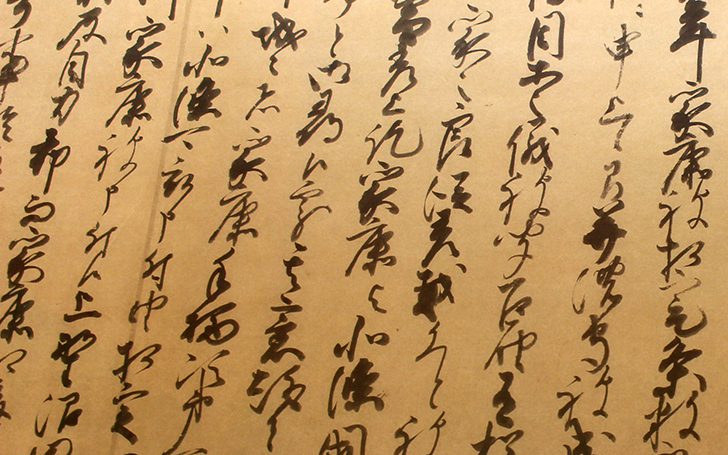46英語で説明したい日本1七五三

日本語訳載せときます。
七五三
七五三とは、7歳、5歳、3歳の子どもの成長を祝う日本の年中行事です。
その年の子を持つ親と子が神社や寺などで「七五三詣で」を行い、報告、感謝、祈願を行います。
七五三の由来には諸説ありますが、平安時代の頃から宮中で行われていた3つの儀式が基になっているそうです。
昔は子どもの死亡率がとても高く、7歳までは神の子として扱われ、7歳になって初めて人として一人前であると認められました。
三歳になった男の子・女の子は、この日より髪の毛を伸ばし始めました。五歳になった男の子には、袴を着けさせました。七歳になった女の子には、付紐ではなく帯を締めて着物を着させました。
この3つの儀式から男の子は三歳と五歳に、女の子は3歳と7歳に七五三を祝うといわれています。
七五三は11月15日に通常祝います。これは江戸時代将軍が子供の健康をこの日祈ったことに由来します。
もし11月15日頃明治神宮や日枝神社、神田明神などに行けば和服を着て千歳飴というカラフルなお祝いのお菓子の袋を持ったかわいい子供達を見られるかも知れません。
作ったタイピングゲームの一覧はこちらです。
https://typing.twi1.me/profile/userId/113751
あとブログのURLは下記に。関連記事と動画があるのでよろしければご覧下さい。英語ニュース以外もあります。
http://okakyutaro.blog.fc2.com/
| 順位 | 名前 | スコア | 称号 | 打鍵/秒 | 正誤率 | 時間(秒) | 打鍵数 | ミス | 問題 | 日付 |
|---|---|---|---|---|---|---|---|---|---|---|
| 1 | りく | 5236 | B+ | 5.3 | 97.7% | 213.9 | 1146 | 26 | 16 | 2025/10/29 |
| 2 | オカピ | 3454 | D | 3.8 | 90.7% | 297.9 | 1146 | 117 | 16 | 2025/10/30 |
関連タイピング
-
Mrs.GREEN APPLEの青と夏です!
プレイ回数15万歌詞1030打 -
オーバーライド 重音テト
プレイ回数16万歌詞かな208打 -
題:Confessions of a Rotten Girl
プレイ回数32英語歌詞1906打 -
めっちゃいい曲....
プレイ回数2.9万歌詞かな200打 -
1問だけど超長いです
プレイ回数5.7万長文かな316打 -
打ち切れたらギネス記録!?が好評だったのでつくりました!!
プレイ回数455歌詞444打 -
テトリスサビ!!!!!!!!!!!!!!!!!!
プレイ回数13万歌詞かな167打 -
【打鍵/秒0.25〜】本当にパソコンが苦手な方
プレイ回数2.3万長文かな102打
問題文
(Shichi-go-san)
Shichi-go-san
(Shichi-go-san is an annual event in Japan that celebrates the growth of children aged 7, 5, and 3.)
Shichi-go-san is an annual event in Japan that celebrates the growth of children aged 7, 5, and 3.
(Families who have children of that age perform Shichi-go-san pilgrimages)
Families who have children of that age perform Shichi-go-san pilgrimages
(at shrines and temples to report, give thanks, and pray.)
at shrines and temples to report, give thanks, and pray.
(There are various theories about the origin of Shichi-go-san, but it seems that it is based on)
There are various theories about the origin of Shichi-go-san, but it seems that it is based on
(three ceremonies that have been held in the Imperial Palace since the Heian period.)
three ceremonies that have been held in the Imperial Palace since the Heian period.
(In the old days, the mortality rate of children was very high, and until the age of 7, they were treated)
In the old days, the mortality rate of children was very high, and until the age of 7, they were treated
(as children of God, and only at the age of 7 were they recognized as full-fledged people.)
as children of God, and only at the age of 7 were they recognized as full-fledged people.
(Boys and girls who turned three years old began to grow their hair from this day.)
Boys and girls who turned three years old began to grow their hair from this day.
(Boys who turned five were made to wear hakama.)
Boys who turned five were made to wear hakama.
(Seven-year-old girls were able to wear kimonos with sashes instead of ropes.)
Seven-year-old girls were able to wear kimonos with sashes instead of ropes.
(From these three ceremonies, it is said that boys celebrate Shichi-go-san)
From these three ceremonies, it is said that boys celebrate Shichi-go-san
(at the ages of 3 and 5, and girls at the ages of 3 and 7.)
at the ages of 3 and 5, and girls at the ages of 3 and 7.
(If you go to Meiji Shrine, Hie Shrine, or Kanda Myojin Shrine around November 15th,)
If you go to Meiji Shrine, Hie Shrine, or Kanda Myojin Shrine around November 15th,
(you might see cute children wearing Japanese clothes)
you might see cute children wearing Japanese clothes
(and holding colorful celebratory candy bags called Chitoseame.)
and holding colorful celebratory candy bags called Chitoseame.








